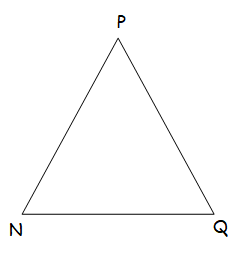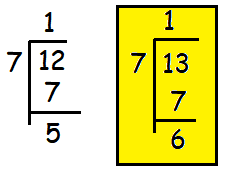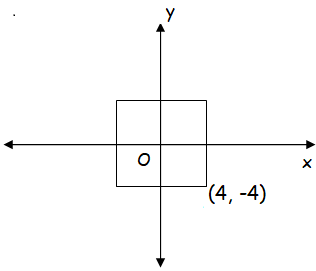PSAT MATH PRACTICE ONLINE
Subscribe to our ▶️ YouTube channel 🔴 for the latest videos, updates, and tips.
Question 1 :
If 2000/2x = 10, then what is √x?
(A) √10 (B) 10 (C) √1000 (D) 100 (E) 1000
Solution :
2000/2x = 10
1000/x = 10
x = 1000/10
x = 100
Taking square roots on both sides, we get
√x = √100
√x = 10
Question 2 :
If x = 9, y = -9 and z = -1, what is the value of yz + √x + yz - √x ?
(A) -24 (B) -18 (C) 0 (D) 18 (E) 24
Solution :
First let us simplify
yz + √x + yz - √x
= 2yz
By applying the value of y and z, we get
= 2(-9) (-1)
= 18
Question 3 :
1 dollar = 0.5 pillets
4 coss = 1 dollar
Lindsey has $20 to spend. She needs to buy exactly 2 pillets. She spends the remaining amount buying coss. How many coss does Lindsey purchase ?
(A) 4 (B) 5 (C) 64 (D) 72 (E) 76
Solution :
1 dollar = 0.5 pillets ----(1)
2 pillets = 4 dollar
She is spending 4 dollar to purchase 2 pillets. So, the remaining amount that she has = 20 - 4 = 16 dollar
For this 16 dollars, she has to buy coss.
Give n that :
1 dollar = 4 coss
16 dollar = 4 (16) coss
16 dollar = 64 coss
Hence, she has to purchase 64 coss.
Question 4 :
√100 ÷ √25 =
(A) √2 (B) 2 (C) 4 (D) 10 (E) 1/2
Solution :
= √100 ÷ √25
= √(100/25)
= √4
= 2
Question 5 :
If x = -8, what is the value of (1/2) |4x - 4|?
(A) -18 (B) -14 (C) -8 (D) 14 (D) 14 (E) 18
Solution :
= (1/2) |4x - 4|
Applying the value of x in the expression, we get
= (1/2) |4(-8) - 4|
= (1/2) |-32-4|
= (1/2) (36)
= 18
Hence the answer is 18.
Question 6 :

Triangle NPQ is an equilateral triangle. If its perimeter is 27, what is the length of NP + NQ ?
(A) 16 (B) 18 (C) 4 (D) 32 (E) 0
Solution :
To find the perimeter of the triangle, we have to find the sum of all the sides.
NP + NQ + PQ = 27
x + x + x = 27
3x = 27
x = 27/3 = 9
NP + PQ = 9 + 9 = 18
Question 7 :
If 40% of x is 160, what is x ?
(A) 0.0025 (B) 4 (C) 64 (D) 360 (E) 400
Solution :
40% of x = 160
(40/100) ⋅ x = 160
x = 160 (100/40)
x = 400
Question 8 :
When d is divided by 7, the remainder is 5, what is the remainder when d + 1 is divided by 7 ?
(A) 0 (B) 1 (C) 4 (D) 5 (E) 6
Solution :
Let d = 12
Here we choose 12, because it is greater than 7, when we divide 12 by 7, we get the remainder 5.
Then d + 1 = 12 + 1 = 13

By dividing this d + 1 by 7, we get 6(5 + 1) as remainder.
Hence the answer is 6.
Note : The number chosen should be 5 more than the multiple of 7.
Question 9 :

In the figure above, O is the center of the square. What is the area of the square ?
(A) 8 (B) 16 (C) 32 (D) 64 (E) 256
Solution :
Side length of square is 8 units.
Area of square = a2
= 82
= 64 square units.
Question 10 :

If O is the midpoint of PW, then what is the distance of OE ?
(A) 10 (B) 11 (C) 12 (D) 13 (E) 17
Solution :
P (-13, 0) W (-3, 0)
O is the midpoint of PW
= (x1 + x2)/2, (y1 + y2)/2
= (-13-3)/2, (0+0)/2
= O (-8, 0)
E (3, 0)
OE = √(x2 - x1)2 + (y2 - y1)2
OE = √(-8-3)2 + (0-0)2
OE = √(-11)2
= 11
Subscribe to our ▶️ YouTube channel 🔴 for the latest videos, updates, and tips.
Kindly mail your feedback to v4formath@gmail.com
We always appreciate your feedback.
©All rights reserved. onlinemath4all.com
Recent Articles
-
10 Hard SAT Math Questions (Part - 38)
Dec 08, 25 12:12 AM
10 Hard SAT Math Questions (Part - 38) -
SAT Math Practice
Dec 05, 25 04:04 AM
SAT Math Practice - Different Topics - Concept - Formulas - Example problems with step by step explanation -
10 Hard SAT Math Questions (Part - 37)
Dec 03, 25 07:02 AM
10 Hard SAT Math Questions (Part - 37)


